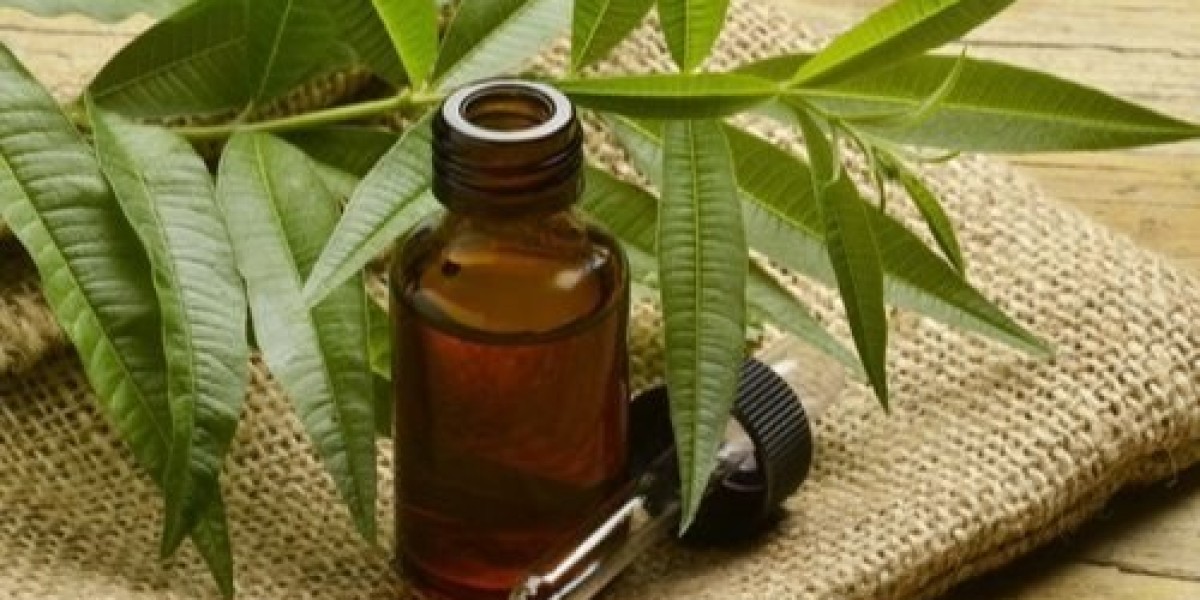Skin tags, those small, benign growths that often appear on the skin's surface, can be a nuisance and even impact your self-confidence. While there are various methods for removing skin tags, one natural and effective option is tea tree oil. In this comprehensive guide, we'll delve into what skin tags are, how tea tree oil works as a remedy, step-by-step instructions for safe removal, and some essential tips to ensure a successful outcome.
Table of Contents:
Understanding Skin Tags
- Definition and characteristics
- Common locations
- Causes and risk factors
Why Choose Tea Tree Oil?
- Introduction to tea tree oil
- Antimicrobial and anti-inflammatory properties
- Gentle on the skin
Preparation and Safety
- Gathering the necessary supplies
- Safety precautions before starting
- Patch testing
Step-by-Step Removal Process
- Preparing the skin tag
- Applying tea tree oil
- Bandaging and aftercare
Alternative Methods
- Comparison with other skin tag removal options
- Advantages of tea tree oil
Potential Side Effects and Risks
- Understanding possible adverse reactions
- When to seek professional advice
Frequently Asked Questions
- Can I use tea tree oil on sensitive areas?
- How long does it take for a skin tag to fall off?
- Is tea tree oil safe for all skin types?
Success Stories
- Real-life accounts of individuals who successfully removed skin tags with tea tree oil
Tips for Optimal Results
- Proper storage of tea tree oil
- Maintaining good skin hygiene
- When to consult a dermatologist
Conclusion
- Recap of the skin tag removal process
- Encouragement to explore this natural remedy
- Emphasizing the importance of patience and consistency
Chapter 1: Understanding Skin Tags
Skin tags, scientifically known as acrochordons, are common skin growths that appear as small, soft, and sometimes pedunculated (hanging off a thin stalk) protrusions on the skin's surface. These benign growths are typically painless and harmless but can be bothersome or cosmetically undesirable. Understanding their characteristics, common locations, and underlying causes is the first step in deciding how to manage them.
Definition and Characteristics: Skin tags are typically small, flesh-colored or slightly darker, and range in size from a few millimeters to a centimeter. They are usually soft to the touch and may be smooth or wrinkled in appearance. Skin tags are often painless but can become irritated if rubbed or snagged by clothing or jewelry.
Common Locations: Skin tags can develop on various parts of the body, including:
- Neck
- Underarms
- Groin area
- Eyelids
- Under the breasts
- Other areas with skin folds or friction
Causes and Risk Factors: The exact cause of skin tags is not fully understood, but several factors are associated with their development:
- Friction or rubbing of the skin
- Genetic predisposition
- Hormonal changes (such as during pregnancy)
- Obesity
- Age (skin tags become more common with age)
Understanding what skin tags are and why they form provides essential context for choosing an appropriate removal method.
Chapter 2: Why Choose Tea Tree Oil?
Tea tree oil, derived from the leaves of the tea tree (Melaleuca alternifolia), is a versatile and popular essential oil known for its potent antimicrobial and anti-inflammatory properties. These characteristics make it an attractive option for removing skin tags.
Introduction to Tea Tree Oil: Tea tree oil has been used for centuries by indigenous Australians for its medicinal properties. It gained worldwide recognition for its natural healing abilities, and today, it is a common ingredient in various skincare products.
Antimicrobial and Anti-Inflammatory Properties: One of tea tree oil's key benefits is its ability to combat microbes and reduce inflammation. These properties can be advantageous when dealing with skin tags, which may become inflamed or infected if not treated properly.
Gentle on the Skin: Unlike some chemical-based skin tag removal methods, tea tree oil is generally gentle on the skin. It is less likely to cause scarring or irritation, making it a preferred choice for those looking for a natural remedy.
Chapter 3: Preparation and Safety
Before you embark on the journey of removing skin tags with tea tree oil, it's essential to be well-prepared and prioritize safety. This chapter covers everything you need to know before you start the removal process.
Gathering the Necessary Supplies:
- High-quality tea tree oil
- Cotton balls or swabs
- Clean water and mild soap
- Sterile gauze or bandages
- Tweezers (if applicable)
- Small scissors (if applicable)
- Mirror and good lighting
Safety Precautions Before Starting:
- Ensure your hands and tools are clean to minimize the risk of infection.
- Perform a patch test to check for any allergic reactions or skin sensitivities.
- If the skin tag is in a sensitive area (e.g., near the eyes), consider seeking professional assistance.
Patch Testing: Before applying tea tree oil to the skin tag, it's crucial to perform a patch test to assess your skin's reaction. Here's how:
- Dilute the tea tree oil with a carrier oil (e.g., coconut oil) to reduce its concentration.
- Apply a small amount of the diluted mixture to a discreet area of your skin.
- Wait 24 hours to check for any adverse reactions like redness, itching, or irritation.
Chapter 4: Step-by-Step Removal Process
Now, let's dive into the actual process of removing skin tags using tea tree oil. This step-by-step guide will ensure that you follow the correct procedure for safe and effective removal.
Preparing the Skin Tag:
- Clean the skin tag and the surrounding area with mild soap and water.
- Gently pat the area dry with a clean towel.
Applying Tea Tree Oil:
- Soak a cotton ball or swab in tea tree oil. Squeeze out any excess oil to prevent dripping.
- Carefully apply the oil to the skin tag, ensuring it is fully covered.
- Secure the treated area with a sterile gauze or bandage.
Bandaging and Aftercare:
- Leave the bandage on for at least 8-12 hours or overnight.
- Remove the bandage and gently clean the area again.
- Continue this process daily until the skin tag falls off, which may take several weeks.
Chapter 5: Alternative Methods
While tea tree oil is an effective natural remedy for skin tag removal, it's essential to be aware of alternative methods and how they compare. This chapter provides insights into other options and highlights the advantages of using tea tree oil.
Comparison with Other Skin Tag Removal Options:
- Freezing (cryotherapy)
- Cutting (surgical removal)
- Burning (electrocautery)
- Over-the-counter solutions
Advantages of Tea Tree Oil:
- Natural and gentle
- Lower risk of scarring or infection
- Suitable for various skin types
- Cost-effective
Chapter 6: Potential Side Effects and Risks
Every skincare method, including natural remedies like tea tree oil, carries some potential side effects and risks. It's crucial to be informed and understand what to watch out for during the skin tag removal process.
Understanding Possible Adverse Reactions:
- Skin irritation
- Allergic reactions
- Infection (if not done correctly)
- Scarring (rare but possible)
When to Seek Professional Advice:
- If you experience severe irritation or an allergic reaction
- If the skin tag does not respond to treatment
- If you notice signs of infection
In this comprehensive guide, we've covered everything you need to know about using tea tree oil for removing skin tags. Whether you're looking for a natural solution or exploring alternatives, informed decisions and patience are key to achieving successful results.
Chapter 7: Frequently Asked Questions
In this chapter, we address common questions individuals have about tea tree oil and its use in skin tag removal. Some of the questions we'll cover include:
- Can I use tea tree oil on sensitive areas?
- How long does it take for a skin tag to fall off?
- Is tea tree oil safe for all skin types?
Chapter 8: Conclusion
In conclusion, removing skin tags with tea tree oil is a safe and effective option for those seeking a natural remedy. It offers numerous advantages, such as gentle treatment, lower risk of scarring, and suitability for various skin types. However, it's essential to prioritize safety, conduct patch tests, and be patient throughout the process.
Remember that individual results may vary, and in some cases, professional assistance may be necessary. Tea tree oil's antimicrobial and anti-inflammatory properties make it a valuable addition to your skincare toolkit, helping you achieve smoother, tag-free skin.
Feel free to reach out if you have further questions or need additional insights. I'm here to support your journey to healthier, blemish-free skin.



